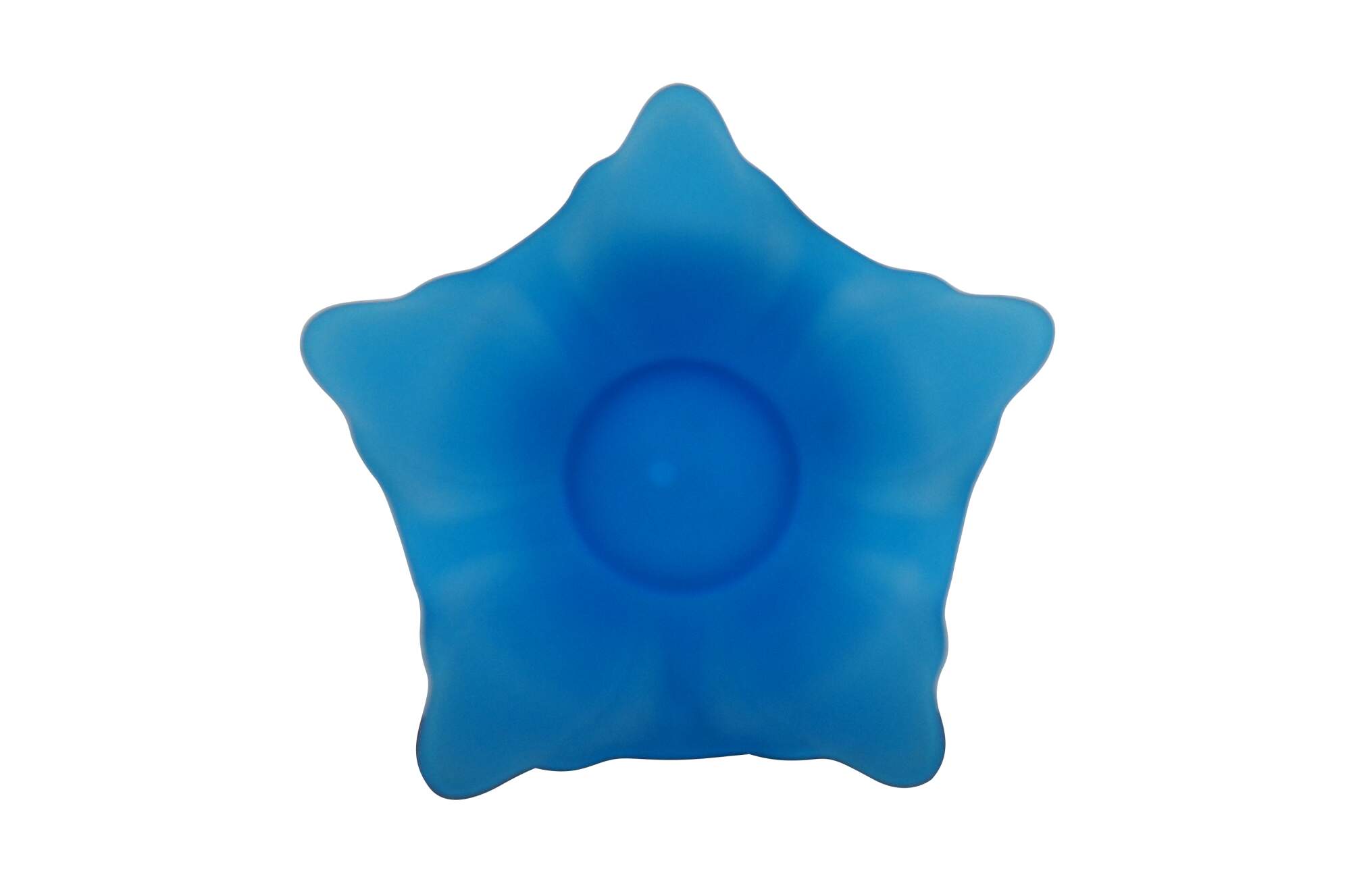
Shipping:
Free Shipping Included
Delivery:
Estimated 2-15 Business Days
Payments:
Credit Card, Check, Cash, PayPal, Apple Pay, Venmo
Returns:
30 Days 100% Money Back Guarantee, Buyer Pays Return Shipping
Description
Vintage Westmoreland turquoise blue satin art glass candy bowl / dish featuring a five pointed freeform star shape with flower petal details and scalloped edges.
"Westmoreland Glass had its origins when Charles West and his brother George bought a majority share-holding in a new glass manufacturing venture in Jeanette, Pennsylvania in 1889. They named it Westmoreland Speciality Company and initially they concentrated on making and selling glass containers such as mustard jars and candy jars, and also some paperweights. In 1920 the business was divided into two, with George West taking the glass containers business into a separate operation called "West Brothers". West Brothers made glass containers successfully until 1929, when George West died. Charles West, together with his close friend Ira Brainard, managed and owned Westmoreland Speciality Company, which now focussed mostly on prducing high quality hand-made glass tableware. The company had first started to make this kind of glassware as early as 1910 when Westmoreland's "Keystone" pattern was introduced. The keystone was widely used in Pennsylvania as a logo and it became part of the company trademark from that date (1910) for many years. The two sons of Charles West and Ira Brainard, Samuel B. West and James J. Brainard, worked with their fathers, and the company changed its name in 1924 to Westmoreland Glass Company. They continued production throughout the depression era, the war years, and right throught the 50s, 60s, and 70s. Charles West died in 1943 and ten years later Ira Brainard's son James J. died. At that stage a third generation, James H. Brainard, took over management and ownership. The hey-day for Westmoreland Glass came in the late 1940s and early 50s, when they concentrated on milk glass and produced literally tons of opaque white glass in every shape of tableware and ornamental glass imaginable. 90% of the total output from Westmoreland Glass is reported to be milk glass. The company did produce a wide range of colors over the years, and some very famous patterns which are collected with enthusiasm today. Up until 1957 their glassware was handfinished with ground bases and fire-polishing. This proved to be too expensive a process from 1957 onwards.There was a very difficult period in the 70s and to try and improve matters Westmoreland made glassware for other companies to market. They used molds and glass formulae from L.G. Wright to make glass for that company; and from 1973 they used old molds with new colors and finishes such as carnival glass for the Levay company. The financial problems worsened, and Westmoreland Glass was sold to David Grossman in 1981. He tried several innovations to save the company, but finally closed it in 1984. The two most common trademarks to be found on Westmoreland Glass are the W in a keystone, which was used from approximately 1910 - 1919; and the W surrounded by a G which was most common from the 1940s onwards. When Grossman bought the company in 1981 he used the trademark of a W that looked more like JJJ surrounded by the word Westmoreland. Paper labels were used extensively by Westmoreland Glass, usually with the words Westmoreland Glass written in a circle around the keystone or around the W in G trademark." (Source: Glass Encyclopedia)
Condition
Good Overall - Gentle wear
Dimensions
12.5" x 12" x 4" (Width x Depth x Height)